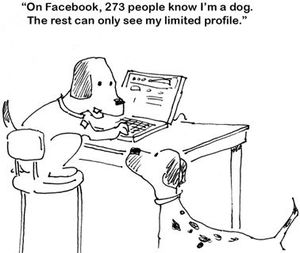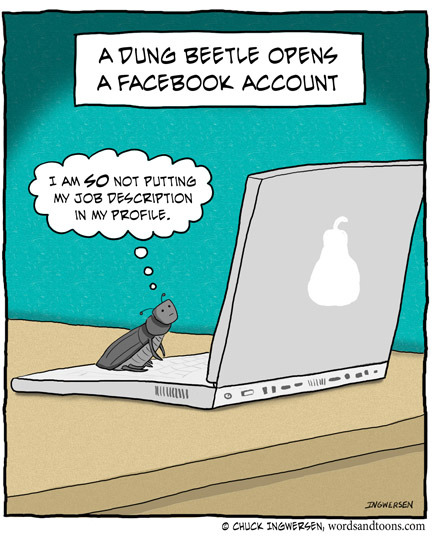 Whatever one wants to say about the value of spending personal time on Facebook, I have to say that at the moment this platform has become quite viable for small businesses who want to build awareness of their products or services. If there is a choice between buying banners on various networks or even specific websites that boast of targeted viewer numbers, I would take Facebook as the better choice right now, hands down.
Whatever one wants to say about the value of spending personal time on Facebook, I have to say that at the moment this platform has become quite viable for small businesses who want to build awareness of their products or services. If there is a choice between buying banners on various networks or even specific websites that boast of targeted viewer numbers, I would take Facebook as the better choice right now, hands down.
According to a 2014 Pew Research study, at least 57% of American adults are regular users of Facebook (teenagers are 73%!), and that seems to be growing so there is little dispute that from a sheer numbers standpoint, a lot is happening on FB. Of course the other important part of the scenario is that Facebook allows you to precisely target your audience as to its age range, special interests and other demographic parameters that have been supplied directly by the audience members themselves.
The big rap on Facebook advertising in the past was the fact that people engaged on the site were not actively looking for a specific product and were ignoring the sidebar ads, i.e. no results for advertisers. But now a combination of usage growth along and better integration of ad displays – hard to tell user content from ads, by design – FB can be a demonstrably cost-effective way to build awareness and hopefully long-term engagement by potential customers. Additionally, I am personally aware and am involved with campaigns that have proven this to be the case.
Unlike search advertising, you are not generally reaching people in a buying cycle, so direct response sales should not be your primary goal with social media ads. However, sales growth can come over time through building awareness and engagement. The best social campaigns incorporate free offers to users that let you capture email addresses and grow your database quickly. As it happens, email marketing remains one of the top direct response sales tools available to businesses, so it follows that anything that grows your list of potential customers is a good strategy.
To summarize my current take on Facebook advertising:
PROS:
- Reasonable cost to reach a lot of people and if nothing else, build awareness
- Define your audience by age, location, interests which in theory should be pretty accurate since the information is provide by the users themselves (but also be aware that a large number of users may not put in very much personal info)
- Multiple placement options – so-called “native” ads which resemble user posts, side banners, post “boosts”)
- Good tracking information as to response activity and profiles of responders lets you make adjustments quickly
- Opportunities to engage responders and capture their emails through creative promotions tied into ads
CONS:
- Not usually a direct driver of sales the way search advertising can be
- A rapidly changing environment – ad saturation may lead to higher rates, user dis-engagement, etc.
- Although the actual story of targeting audiences sounds good on its face, as with all of these big companies, you feel you are dealing with a secret sauce formula that you will never quite understand – and it’s changing all the time
- The back-end interface for setting up ads has a bit of a learning curve, but at the end of the day it is not terribly complicated if you have worked with online advertising activities before
Overall, the pros for Facebook advertising do seem to outweigh the cons.
 As I mentioned in my previous article about Google AdWords, everything is ultimately stacked in favor of the “house” in terms of who is making the real money in this game. Most small businesses cannot take pure awareness/ branding advertising very far in terms of budget, so it is very important to set some objectives in terms of gaining engagement. The most practical goal in my opinion is to obtain email addresses that you can then re-market to at very little cost. Having them simply visit a page on your website can also provide fuel for re-targeting ads on the web, which although useful, are not as good as actually having a way to directly reach people who have shown interest.
As I mentioned in my previous article about Google AdWords, everything is ultimately stacked in favor of the “house” in terms of who is making the real money in this game. Most small businesses cannot take pure awareness/ branding advertising very far in terms of budget, so it is very important to set some objectives in terms of gaining engagement. The most practical goal in my opinion is to obtain email addresses that you can then re-market to at very little cost. Having them simply visit a page on your website can also provide fuel for re-targeting ads on the web, which although useful, are not as good as actually having a way to directly reach people who have shown interest.
Typically you would trade something with the user to obtain that email, which can range from a free “how-to” guide they can download to entry in a contest, to an actual free sample of something. Simply asking someone to “join” your mailing list is a non-starter in most cases.
There are a few services like OfferPop.com that provide ways to cleverly integrate these types of email-acquisition programs into your social marketing strategy, and they are worth looking into. You can usually sample how they work for free or at very little upfront cost.
Part of me wishes there was some type of non-profit social platform that could generate the participation and reach of Facebook in a non-commercial environment. But that’s not how things work right now on the planet, so I will put some positive spin on the subject by saying that at least, for the moment, Facebook does enable the small entrepreneur to get his or her message out there to a huge, well-defined audience at a price and method that simply was not available to them before.
